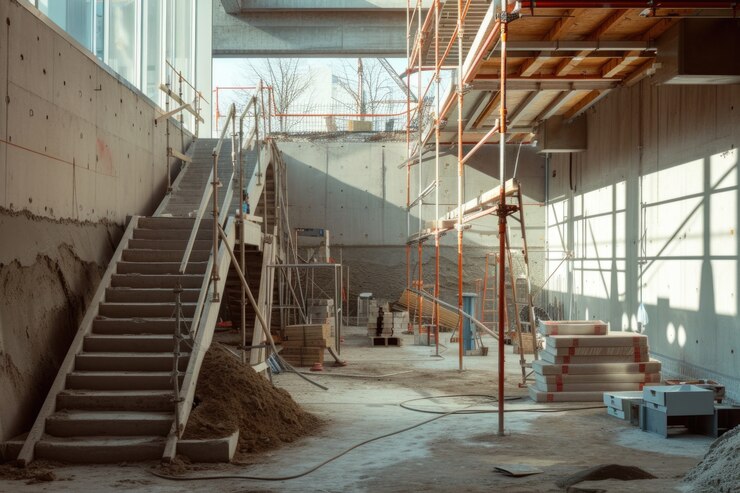Your home’s foundation is crucial in keeping your house safe and stable. It supports everything above it, making its care and maintenance very important. Paying attention to your foundation can prevent small problems from turning into big, costly repairs.
Foundations can be affected by seasonal changes and other environmental factors. Swelling soils can cause shifts, leading to cracks and other issues. Being aware of these signs helps you solve problems early, protecting your home’s value and safety.
Simple maintenance tasks and helpful tips keep your foundation in good health. By understanding what to look for and taking proactive steps, you can maintain a strong foundation year-round. Read on to learn more about how to care for this critical part of your home.
Recognizing Signs of Foundation Troubles
Spotting foundation problems early can save you from major headaches later. Common indicators include cracks in walls or floors, doors and windows that stick or won’t close properly, and uneven floors. These signs suggest shifts or settling in the foundation that may need attention.
Seasonal changes can significantly impact your foundation. For instance, during dry seasons, the soil around your home contracts, leading to gaps under the foundation. In the wet months, that same soil may swell, potentially lifting and cracking the foundation. Recognizing how the changing seasons affect your home allows you to anticipate and prepare for these issues.
During home inspections, it’s important to be vigilant about these signs. Look for:
- Cracks in exterior bricks or the structure itself.
- Any separation between walls and ceiling/floor.
- Increased water presence in basements or crawl spaces.
Regular inspections and awareness of these potential issues help maintain a strong and healthy foundation. Keeping an eye on these factors ensures that small problems don’t escalate into larger, more costly repairs down the road.
Practical Foundation Maintenance Steps
Proper maintenance is key to preserving your foundation’s integrity. One simple yet crucial step is regular watering of the soil surrounding your home. During dry spells, the soil can shrink, leading to gaps under the foundation. Consistent moisture levels help prevent soil shrinkage and maintain a stable base.
Keeping your gutters clean is another important task. Clogged gutters can lead to water pooling around the foundation, increasing the risk of water damage. Regularly remove leaves and debris from gutters to ensure efficient water flow. This simple act can prevent costly foundation issues linked to water damage.
Additionally, it’s essential to perform simple checks for drainage problems. Ensure that the ground around your home slopes away from the foundation to minimize water accumulation. Look for signs of erosion or pooling water, which could signal drainage issues that need addressing.
These practical steps will help you maintain a solid foundation, protecting your home from structural problems. Regular attention and maintenance ensure durability and longevity, keeping your foundation in top condition.
Importance of Professional Inspections
Regular professional inspections play a vital role in maintaining your foundation’s health. It’s wise to schedule a professional check every few years or whenever you notice signs of possible trouble, like cracks or sticking doors. These inspections provide peace of mind, ensuring minor issues are caught early on.
The benefits of expert evaluations are numerous. Professionals have the experience and tools needed to identify problems that may go unnoticed to the untrained eye. They offer detailed assessments and recommendations, helping you make informed decisions about necessary repairs or maintenance.
Ignoring your foundation health can lead to significant risks. Problems left unchecked may worsen over time, eventually requiring more extensive and expensive repairs. Untreated issues could impact your home’s safety and value, making regular professional evaluations a smart investment in your property.
Preventive Measures for Foundation Health
Taking preventive steps reduces the likelihood of foundation problems. Landscaping plays a key role in protecting your foundation. Ensure plants and trees are placed at a safe distance from your house. Their roots can draw moisture from the soil, potentially affecting stability.
Proper grading is essential for directing water away from your home. Make sure the ground slopes gently away from the foundation, guiding rainfall and runoff away from the base. This simple measure minimizes the risk of water-related foundation damage.
Managing moisture levels around your foundation also helps maintain structural integrity. Use these best practices for moisture control:
- Install vapor barriers in crawl spaces to reduce moisture buildup.
- Ensure good ventilation in your home’s basement or crawl spaces.
- Regularly check plumbing for leaks that could increase soil moisture.
By actively managing these aspects, you can prevent many common foundation issues and maintain your home’s long-term stability.
Conclusion
Caring for your foundation is a crucial part of homeownership that ensures safety and preserves your property’s value. Identifying early signs of trouble, performing regular maintenance, and seeking professional inspections all contribute to a strong foundation. Consistent attention to your foundation’s health leads to fewer repairs and a more secure home environment.
Preventive measures and expert evaluations create a proactive approach that keeps your foundation in top shape. Investing time and resources in this critical area protects your investment for years to come, providing confidence and peace in your living space.
Looking to secure your foundation? Lift-Texas Construction is here to help. Our team specializes in tailored foundation repair solutions, ensuring your foundation remains strong and reliable. Contact us today to schedule an expert evaluation and take the first step in preserving your home’s integrity.

